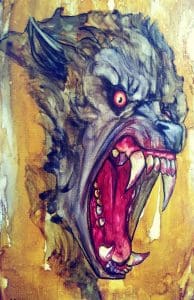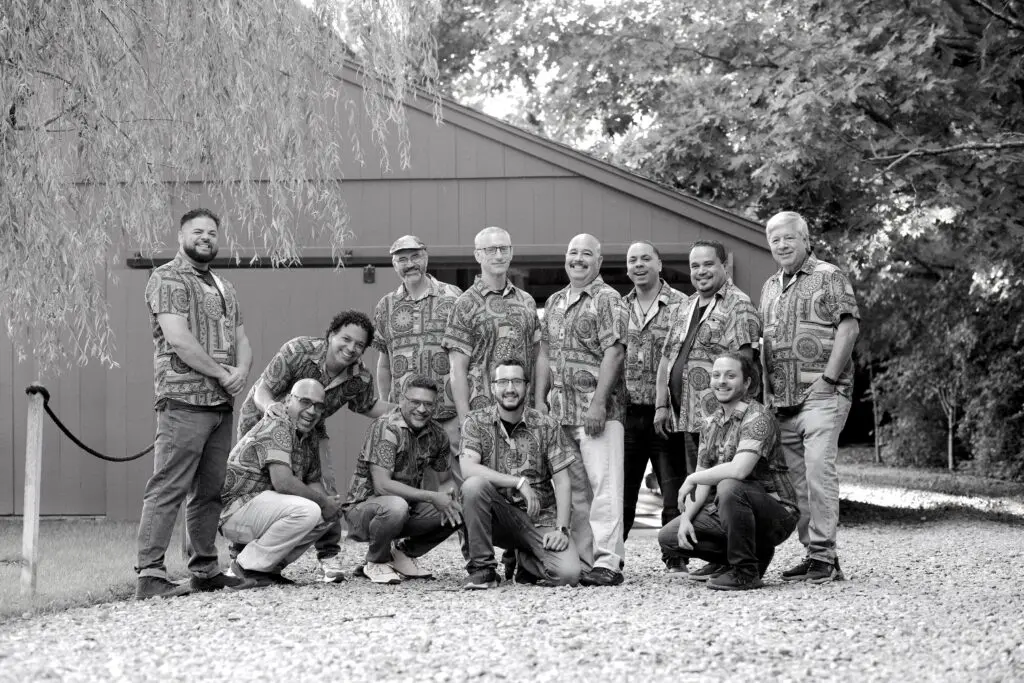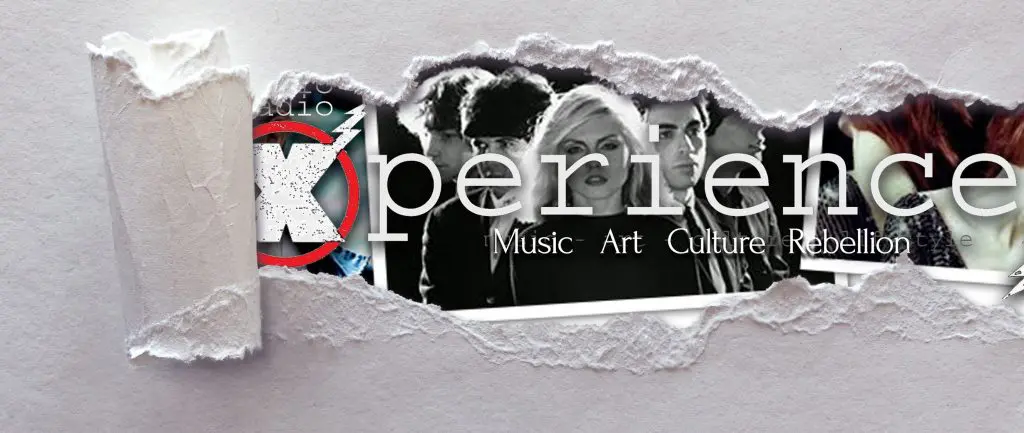Heroes and Monsters – the Art of Morgan Alyssa Rouche
Written by Liam Sweeny on June 12, 2019
In the depths of our minds lie the figments of imagination that years, decades of popular culture has given form, and a select handful of people among us have been given the spark, and developed the skill to bring these figments an existence. They interpret, and they reveal. These people are visual artists, and of all the creative forms, their art is the most immediate.
Morgan Alyssa Rouche is one such artist. She has, through her work and her exposition, has built a fan base and opened a portal, picture by picture, into the landscape of her inner fantasy world.
I sit down with Morgan and we discuss trapping Bob Ross’s ghost in a portrait.
RRX: A lot of your work that I’ve seen really pushes on two themes, though not limited to them: comic book characters and creatures from classic horror. In your own style, you seem to retell these characters. How do you see the world of the ‘super’ as a creator rather than just a spectator? Do you think it’s a different relationship?
MAR: I have always drawn personal inspiration from things I used to escape throughout my life, comics being a big one. Growing up, I would get very frustrated with my own style artistically, I’m classically trained and have always tended to lean towards what’s considered a more classical style when creating, illustration fascinated me. I just couldn’t get my hands to do what comic artists could. I wasn’t fast and I certainly wasn’t linear. I received a full scholarship for fine art for college and was told repeatedly that my taste and subject matter choices didn’t match my style and if I were to ever want “to make it,” I’d need to focus on things outside my liking and keep a traditional path. Naturally, I didn’t take well to that and didn’t do phenomenal there. In 2004 I suffered a traumatic brain injury and didn’t touch a pencil or paint brush for years. Then one day I promised myself I would draw or paint every single day even if I didn’t want to until it came naturally again. Since I was doing it just for me, there were no rules and my style and subject matter could clash because no one but me would be judging it. So I looked for inspiration in what I thought was beautiful (nature and color) and what I immersed myself in my whole life to escape (villains and superheroes.)
RRX: You experiment with paints and inks, the medium in general, as much as you do with the subjects in your work. Do you have any mental rules for the medium or the process you use? Is it more dependent on the subject, or your frame of mind?
MAR: My only rule is to never follow rules. Art to me has always been an escape from reality and rules, it’s pretty much the only time you can be free of outside influence and restraints. It’s difficult to get to the point where you can trust yourself to truly express emotions without fearing the opinions of others; letting go of all that nonsense that’s been so drilled into our minds is the biggest hurdle in any artistic experiment and really in becoming an artist in itself in my opinion.
RRX: You sell a lot of your work at conventions, like the Saratoga Comicon. Cons in general have really come in out of the cold of gatherings, from being very obscure fandom to now, where they’re pretty much mainstream. What do you think has brought Cons into the sphere of pop culture?
MAR: modern Cons are very inclusive as far as popular culture goes. Starting out as something that attracted small groups of comic book and science fiction fans and creators, Cons have become much less pigeon-holed and grew to be much more diverse attracting fans of all different creative genres. I don’t think Conventions would be nearly as successful if any single fan, group of fans or creatives felt as if they couldn’t openly express their passion for their particular fandom without judgement. People often forget these days with the popularity of things like the MCU that it once wasn’t considered typical or mainstream to even be familiar with comic characters let alone idolize them, suddenly the convention scene has become “the cool kids table” in a sense.
RRX: We’re saturated in digital art these days. I’m not saying it’s a bad thing, really, it’s just another medium. Technically, you digitize your art every time you take a picture of it and show it on social media. But in terms of technique, what do you think may be lost on the pure digital artist? And what do they bring to the table themselves?
MAR: Oh boy, let me start by saying I admire digital artist’s mainly because I could never be one. I can’t imagine finishing a piece and not being absolutely and totally covered in the evidence of having created it. Those who see me often know I am almost always covered in paint and ink, (so much so I often have people ask me who made my clothes, receiving sideways looks when handing someone something with ink stained hands.) I’m so used to being fully immersed in my work I have to feel it, the consistency of my paints and inks right down to the texture of my canvas. I by no means work cleanly; you’d think a rainbow had been brutally slaughtered by the time I’m done working in a particular space. I see the appeal to some people working digitally and like all art and artists, I have nothing but respect for it just hasn’t and won’t ever be for me
RRX: You are well known by friends and fans alike for showing works in progress on social media. As a writer, I do it too, but it’s a plunge in the cold water. Is it that way for you? What’s the benefit of letting people see your process? Are there any drawbacks?
MAR: I started sharing my progress on social media mainly because of conversations with a couple of younger artists I met at Conventions early on. They had expressed frustrations with their own work throughout its various stages and I realized that all they really had to go on was my finished work. I didn’t think it was fair to them to only see something so final, my work evolves so much from conception to conclusion and almost always is unrecognizable every stage in between. I’ve always been an artist just for me. When I started sharing my art I realized pretty quickly other people, younger females in particular are watching closer than I ever thought they would, and the last thing I wanted was for them to be frustrated or discouraged by my work. Things aren’t always perfect and that’s ok. There is no right or wrong way to be an artist and contrary to popular belief not a single artist I’ve ever known sat down and instantly created something Beautiful without putting absolutely every last thing they could give into it… that’s super important and something I myself wish I learned way before I did.
RRX: Artists gotta’ get paid. I can’t write biscuits and you can’t paint your belly full. Pretty much everybody knows it isn’t easy to sell creative work. It’s hard for people to monetize the value of something that makes you happy, or sad, or reminds you of a lost love. So how do we convince people that ‘invaluable’ doesn’t mean ‘valueless’?
MAR: This is the absolute worst part of being a creative in my opinion. I could go on and on about my distaste for monetizing my art and actually when I started on this journey, I promised myself that if I ever felt like the need for more income interfered with my love of art I would take a step back and reevaluate. I never want to have to look at what I love to do and feel anything else but peace from it. It’s EXTREMELY difficult to make a living off of any art form independently, and honestly, having been to many different conventions I can tell you allot of them are over-saturated with digital reproduction vendors selling other people’s artwork for half (if not more than half) the price of an actual artist selling his or her original hand signed artwork. As a single mother of a son I can speak from experience that if I attend a festival or convention and I have 2 children both wanting artwork depicting 2 different characters, monetarily speaking, the digital reproduction guy selling two reproduced from the internet prints for $10 is a better deal for my pocket, but for my kids? I know by going to the table of an actual artist I’ll get so much more. More often than not my child will not only walk away with original hand signed work but with a new friend, tons of inspiration and confidence they will never be able to get from someone not directly connected to the work they are selling. That’s the difference, as creatives we aren’t only selling our work we’re selling ourselves with it and that’s a huge difference, people that take the time to figure that out often have no problem paying more because the payoff to them in the end is well worth it.
RRX: Here is where you can answer the question I didn’t ask. Who’s out there worth taking a look at? Anything on your calendar? The best formula for invisible ink? Anything you want, the floor is yours.
MAR: I can’t stress enough if you have a budding creative in your life bring them to SARATOGA COMIC CON come fall, it’s so full of amazing artists, writers and creators just waiting to inspire them the moment they walk through those doors.







 RadioRadioX
RadioRadioX